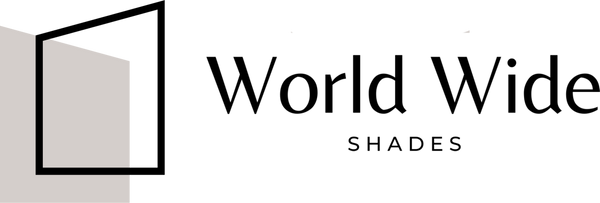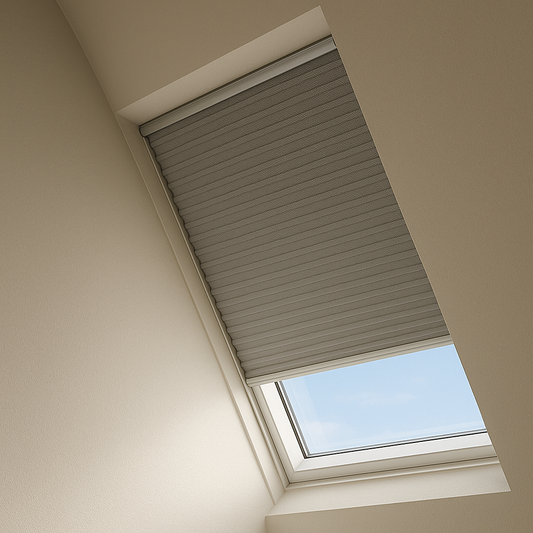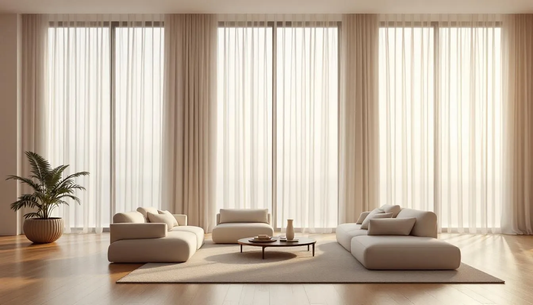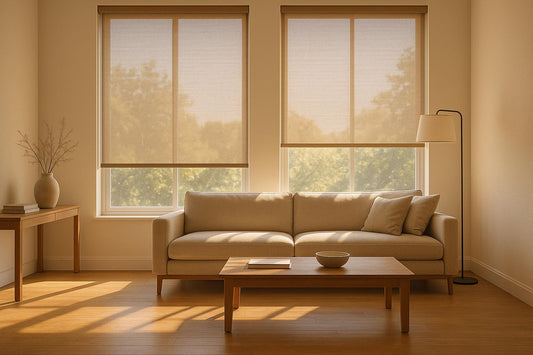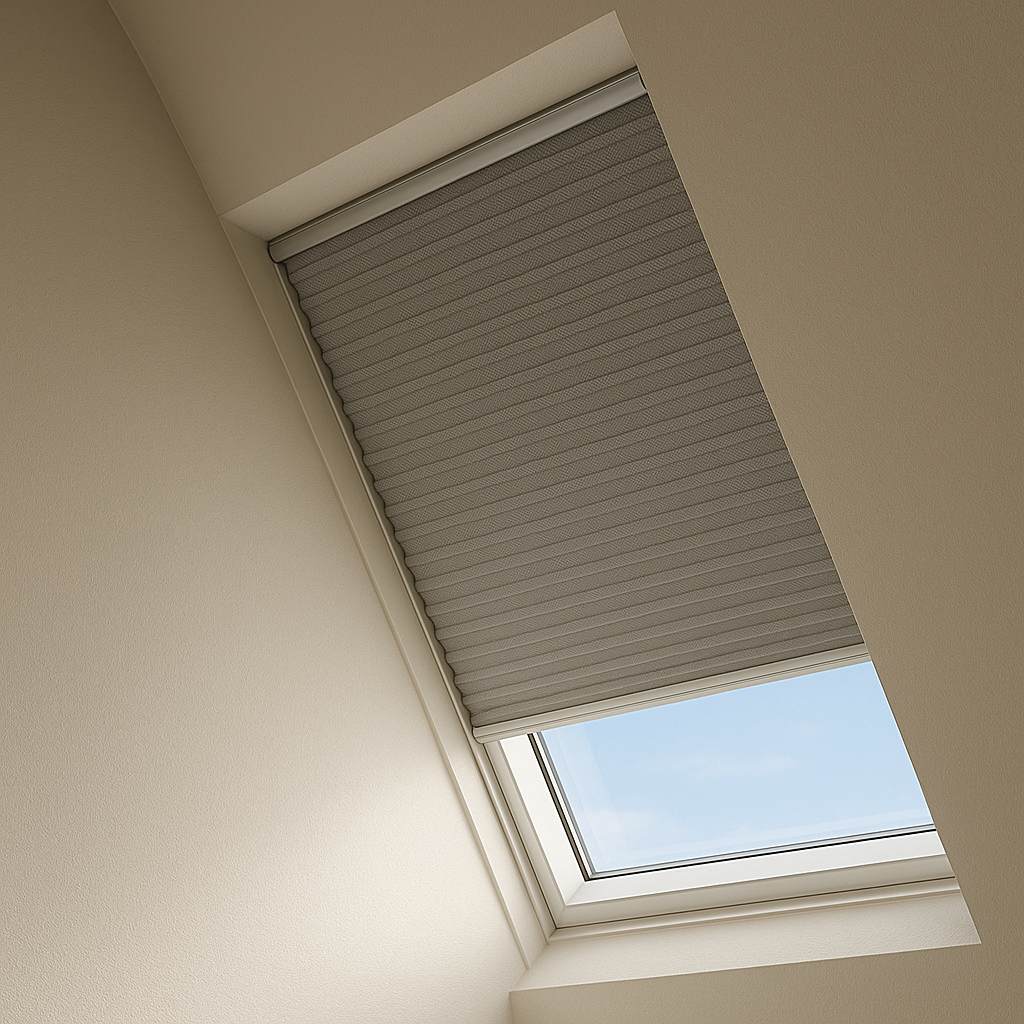
The Complete Guide to Angled Window Shades: Solutions for Triangular, Arched, and Sloped Windows
Introduction
Angled window shades are custom-designed window treatments specifically engineered for non-standard window shapes including triangular, trapezoid, and arched windows that cannot accommodate traditional rectangular shades. Unlike standard window treatments, these specialized shades require precise measurement, custom fabrication, and often unique mounting systems to provide effective light control and privacy for odd shaped windows in modern architectural designs.
Standard off-the-shelf blinds and shades simply won’t work for angled windows, creating gaps that compromise both aesthetics and functionality.
What This Guide Covers
This comprehensive guide covers all major types of angled window shades, from cellular honeycomb designs to motorized arched solutions, including selection criteria, installation methods, and energy efficiency considerations. We’ll explore both manual and remote control options, but won’t cover standard rectangular window treatments or curved radius windows.
Who This Is For
This guide is designed for homeowners with specialty shaped windows, architects specifying window treatments for custom projects, and interior designers working with contemporary architecture. Whether you’re dealing with A-frame house triangular windows or urban loft trapezoid configurations, you’ll find specific solutions for your odd shaped window challenges.
Why This Matters
Properly fitted angled shades provide essential light control, enhanced insulation, and privacy while keeping your space energy efficient and maintaining the aesthetic appeal of specialty windows. Poor or missing window treatments on angled windows can result in excessive glare, energy loss, and compromised living space comfort, particularly in homes with large glass areas.
What You’ll Learn:
-
How to identify the right shade type for your specific angled window shape
-
Energy efficient options that provide enhanced insulation and cost savings
-
Installation requirements and motorized remote control capabilities
-
Common challenges and professional solutions for odd shaped windows
Understanding Angled Window Shades and Window Types
custom window treatments designed specifically for windows with non-rectangular geometries, including triangular, trapezoid, arched, and other specialty shapes that require bespoke manufacturing to achieve proper fit and function. Each custom shade is a unique product, tailored to the specific window shape and requirements.
Standard rectangular shades cannot accommodate the unique angles and curves found in architectural windows, leaving gaps that compromise light control, privacy, and energy efficiency. These specialty windows are increasingly common in modern home designs, A-frame houses, loft conversions, and custom builds featuring dramatic rooflines.
The primary purpose of angled shades is to provide the same functional benefits as traditional window treatments—light control, privacy, and insulation—while maintaining the visual appeal and architectural intent of specialty shaped windows.
Common Angled Window Shapes
Triangle windows are the most common angled configuration, typically found in gable ends and A-frame structures. These windows require shades with one or more angled edges, often featuring stationary coverage for the pointed sections combined with operable shades for rectangular portions.
Arched windows present unique challenges with their curved top sections, requiring specialized hardware and flexible materials that can conform to the arch while providing smooth operation. Motorized arched shade systems often offer the best solution for these elegant architectural features.
Trapezoid and right trapezoid window configurations feature multiple angled sides, requiring precise measurement and custom fabrication. These shapes commonly appear in modern residential and commercial architecture where geometric design elements create visual interest.
Pentagon and quarter-round specialty shapes represent the most complex angled window applications, typically requiring fully custom engineering solutions. This connects to angled shade concepts because each unique shape demands specific technical approaches to achieve proper coverage and operation.
Architectural Applications
Vaulted ceilings and gable windows frequently incorporate triangular or trapezoid shapes that follow the roofline, maximizing natural light while creating dramatic focal points. These installations often benefit from motorized systems due to their height and accessibility challenges.
Loft spaces and custom-built homes commonly feature odd shaped windows as design elements, where angled shades must balance functionality with aesthetic appeal. The shades become integral to the overall design scheme rather than simple functional additions.
Skylights and sloped ceiling installations represent specialized angled applications where gravity and unusual mounting angles create unique operational requirements. Building on previous window types, these installations demonstrate how angled shade solutions adapt to real-world architectural challenges while maintaining essential light control and energy efficiency features.
Choosing the Right Angled Window Shades
Opening this selection process requires understanding how your specific window configuration, room requirements, and operational preferences interact with available shade technologies and materials.
Material and Fabric Options
Blackout fabrics provide complete light control for bedrooms and media rooms with angled windows, using dense weaves or backing materials that eliminate light penetration. These materials are particularly effective for triangular bedroom windows in A-frame homes where morning sun can disrupt sleep. Angled window shades are available in a wide range of colors, allowing you to choose hues that complement your home interiors and enhance the overall aesthetic.
Energy efficient materials focus on enhanced insulation properties, with cellular honeycomb construction being the most effective option for angled windows. These materials can reduce energy loss through windows by up to 25% according to Department of Energy studies, making them ideal for large angled installations.
UV-resistant options protect both interior furnishings and the shade fabric itself from sun damage, crucial for south-facing angled windows that receive intense direct sunlight. Technical terms like “solution-dyed” fabrics indicate superior fade resistance compared to piece-dyed alternatives, and a variety of styles are available so homeowners can select angled window shades that match their decor and personal taste.
Operational Mechanisms
Manual operation systems use traditional cord and pulley mechanisms adapted for angled installations, though these systems may have limited functionality on sharp angles or very tall windows. Cordless manual systems provide cleaner aesthetics and improved safety.
Motorized options excel for hard-to-reach angled windows, offering consistent operation regardless of window height or angle complexity. These systems integrate with remote control technology and smart home platforms for convenient management.
Remote control and smart home integration capabilities allow programming of angled shades based on time of day, sun position, or temperature, maximizing both convenience and energy efficiency. Unlike manual systems, motorized solutions provide consistent performance across all seasons and weather conditions.
Custom Fitting Requirements
Measurement considerations for angled windows require professional templating to ensure precise fit, as even small errors can result in significant gaps or operational problems. Standard measuring techniques used for rectangular windows don’t apply to specialty shapes.
Professional vs. DIY installation assessment typically favors professional installation for angled shades due to mounting complexity and the risk of expensive mistakes with custom-fabricated products. DIY installation is generally not recommended for anything beyond simple triangular configurations.
Lead times and customization options for angled shades typically range from 3-8 weeks due to the custom manufacturing process, requiring advance planning for new construction or renovation projects.
Key Points:
-
Material selection directly impacts energy efficiency and light control effectiveness
-
Motorization provides superior convenience and accessibility for angled installations
-
Professional measurement and installation minimize costly errors with custom products
Transition: Understanding these selection criteria leads naturally to examining the specific installation processes and motorization technologies that bring angled shade solutions to life.
Energy Efficient Solutions for Angled Windows
Angled windows add architectural interest and natural light to any living space, but their unique shapes can present challenges when it comes to energy efficiency. Because odd shaped windows like triangles, trapezoids, and arched designs often have more glass surface area and unconventional edges, they can be prone to heat loss in winter and heat gain in summer.
Energy-efficient angled shades are specifically designed to address these challenges. Motorized arched and angled shades can be programmed to open and close at optimal times, allowing you to harness natural light during the day and block out heat or cold when needed. This smart scheduling not only enhances comfort but also reduces the need for artificial heating and cooling, lowering your energy bills.
A variety of energy efficient fabrics are available for these specialty shades, including cellular and honeycomb materials that provide enhanced insulation. These fabrics trap air within their structure, creating a barrier that helps maintain your home’s temperature year-round. For even greater efficiency, consider window films or coatings that reflect solar radiation—these can be especially effective for large, sun-facing shaped windows.
Custom-fit blinds and shades are essential for odd shaped windows, as they eliminate gaps that can let in drafts or unwanted sunlight. Each shade is designed to fit the exact dimensions and angles of your window, ensuring complete coverage and maximum insulation.
For ultimate convenience and control, integrate your motorized angled shades with a smart home system. Automated scheduling and remote control allow you to adjust your shades from anywhere, optimizing both light and temperature throughout the day.
By choosing energy efficient solutions for your angled windows, you’ll enjoy a more comfortable home, lower energy costs, and the satisfaction of reducing your environmental impact—all while preserving the unique beauty of your specialty shaped windows.
Installation and Motorization Options
Context-setting for angled shade installation builds on the previous selection considerations, where custom fit requirements and operational mechanisms converge into practical implementation challenges requiring specialized expertise and equipment.
Step-by-Step: Professional Installation Process
When to use professional installation: All angled shade installations benefit from professional services due to measurement precision requirements, custom mounting hardware, and warranty protection for expensive custom products.
-
Measurement Verification: Professional installers use specialized templates and digital tools to confirm window dimensions and angles, accounting for any irregularities in the window frame or surrounding structure.
-
Mounting Bracket Placement: Custom brackets designed for the specific shade type and window configuration are positioned and secured using appropriate fasteners for the wall or window frame material.
-
Shade Fitting: The custom-fabricated shade is carefully positioned and attached to the mounting system, with particular attention to edge alignment and operational clearances.
-
Testing Operation: Complete functional testing ensures smooth operation, proper light control, and verification of any motorized or remote control features before final adjustment and customer handoff.
Comparison: Manual vs. Motorized Angled Shades
|
Feature |
Manual Operation |
Motorized Operation |
|---|---|---|
|
Cost |
Moderate ($300-800) |
High ($800-2000+) |
|
Convenience |
Limited for tall/angled windows |
Excellent for all configurations |
|
Installation Complexity |
Moderate |
High (electrical required) |
|
Maintenance |
Minimal |
Battery/motor service needs |
|
Smart Home Integration |
None |
Full compatibility available |
Motorized systems provide superior convenience and functionality for most angled window applications, particularly where windows are difficult to reach or where precise light control scheduling is desired. The higher initial investment typically pays dividends in daily usability and energy management capabilities.
Connection to the next section: Even with professional installation and quality products, angled shade owners commonly encounter specific challenges that require targeted solutions.
Common Challenges and Solutions
Brief intro: The unique geometry and custom nature of angled shade installations create predictable challenges that homeowners and designers should anticipate during the planning and installation journey.
Challenge 1: Accurate Measurement of Irregular Angles
Solution: Professional measurement services use specialized angle-finding tools and create physical templates that account for window frame irregularities and ensure precise custom fabrication.
Supporting techniques include digital photography with measurement overlays and computer-aided design verification to minimize errors in the manufacturing process.
Challenge 2: Limited Fabric and Style Options
Solution: Custom fabrication services and specialty shade manufacturers offer extensive fabric libraries specifically designed for angled applications, though lead times may be extended compared to standard products. Homeowners can choose from a wide selection of colors and styles for angled window shades, allowing them to achieve their desired look and complement their home interiors.
Each custom shade is a unique product, crafted with attention to quality and tailored customization by specialty manufacturers.
Working with experienced designers helps navigate available options and ensures fabric selections suit both functional requirements and aesthetic preferences while maintaining the architectural integrity of specialty shaped windows.
Challenge 3: Difficult Operation of Hard-to-Reach Angled Windows
Solution: Motorization with remote control or smart home integration eliminates accessibility issues while providing precise control over light levels and privacy settings throughout the day.
Modern motorized systems offer programmable operation, battery backup options, and integration with home automation platforms, delivering both convenience and enhanced energy management benefits for challenging angled window installations.
Maintaining Angled Window Shades
To keep your angled window shades performing at their best, regular maintenance is key. Well-maintained shades not only provide superior light control and privacy but also help maintain energy efficiency and extend the life of your investment.
Start by dusting or vacuuming your shades regularly to prevent dust and debris from accumulating. This simple step keeps the fabrics and mechanisms clean, ensuring smooth operation and optimal insulation. For deeper cleaning, use a mild detergent and water to gently wipe down the shades, taking care to avoid harsh chemicals that could damage specialty fabrics.
If you have motorized or remote control shades, check the batteries periodically and replace them as needed to guarantee uninterrupted convenience. It’s also wise to test the remote control functions and smart home integrations occasionally to ensure everything is working as intended.
Inspect your shades for signs of wear, such as frayed edges, broken slats, or issues with the blackout lining. Promptly addressing these problems will help maintain both the appearance and performance of your shades. For custom-fit blinds or shades, always follow the manufacturer’s care instructions to preserve their fit and function.
Regular maintenance not only keeps your shades looking clean and stylish but also prevents common issues like blackout shade malfunction, remote control glitches, or installation problems. By following these simple steps, you’ll continue to enjoy the benefits of energy efficiency, privacy, and convenience that angled window shades bring to your home for years to come.
Conclusion and Next Steps
Angled window shades transform challenging architectural features into functional design elements that provide essential light control, enhanced insulation, and privacy while preserving the visual drama of specialty shaped windows. Success depends on selecting appropriate materials and operational systems matched to your specific window configurations and lifestyle requirements.
To get started:
-
Professional consultation: Schedule measurement and assessment with qualified angled shade specialists to determine optimal solutions for your specific windows
-
Material selection: Choose fabrics and operational systems based on your light control, energy efficiency, and convenience priorities
-
Installation planning: Allow 4-8 weeks lead time for custom fabrication and coordinate installation with any related construction or renovation activities
Related Topics: Consider complementary window treatments for adjacent standard windows, smart home integration opportunities, and seasonal light management strategies to maximize the benefits of your angled shade investment.
